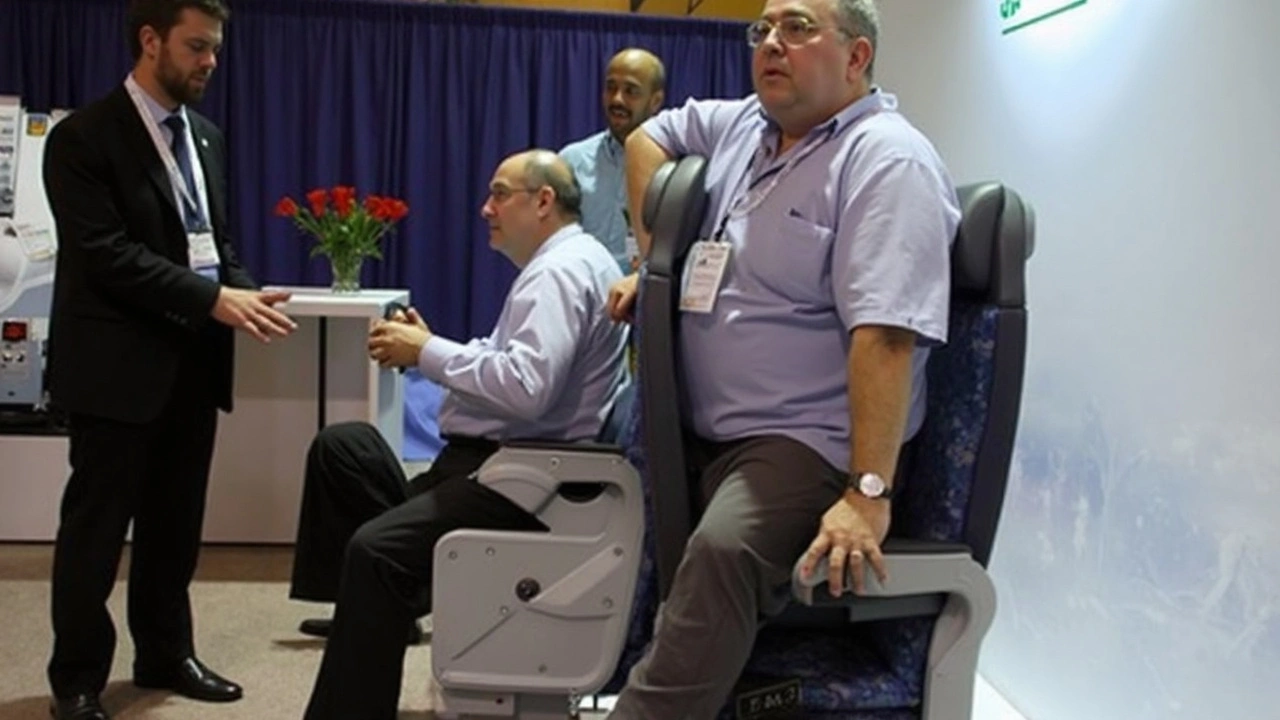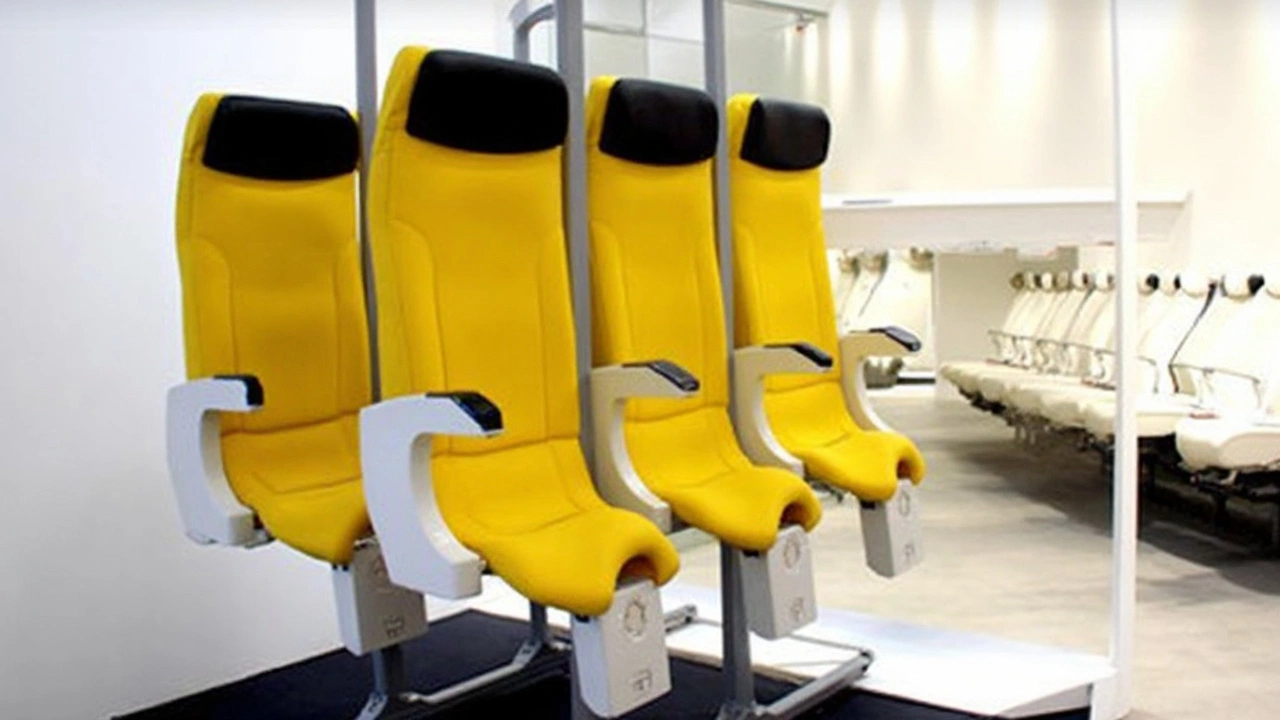Budget Airlines Take Aim at the Next Great Leap: the Standing Seat
Every time a budget airline squeezes another row of seats into a plane, the internet erupts in jokes about flying cattle class. But companies are now edging closer to a future where standing—or something very close to it—isn’t just a punchline. The Skyrider 2.0 and its offspring, Skyrider 3.0, bring that vision uncomfortably close to reality.
Developed by Italian design firm Aviointeriors, these standing-style seats look less like airline chairs and more like the awkward love child of a barstool and a saddle. Instead of sitting back, passengers perch (some say ‘persevere’) on upright, padded supports. Structurally, these seats use reinforced poles anchored to the floor and ceiling for added stability, carving out several extra inches of precious floor space. For airlines obsessed with squeezing out every cent, the appeal is obvious: these seats are about 50% lighter than standard ones, meaning lowered fuel bills and up to 20% more people on board every flight. It gets even juicier for budget travelers—think tickets as low as a pound. Ryanair’s colorful CEO, Michael O'Leary, has floated fares between £1 and £5 for these upright tickets, dangling the idea of air travel for the price of a coffee.
Still, no major airline has pulled the trigger and actually flown passengers in these seats. Regulatory agencies in Europe have run exhaustive crash and evacuation tests on the latest versions, and Aviointeriors claims the Skyriders tick enough safety boxes to let them fly short domestic hops, typically under two hours. But the devil is in the details. When you stuff more bodies onto a plane, you’re also ramping up the pressure in crucial evacuation scenarios. The Skyrider’s more crowded design means less wiggle room and potentially slower exits when every second counts.

The Complicated Road from Concept to Cabin
The concept isn’t brand new. More than ten years ago, airlines and manufacturers floated standing-seat ideas that failed spectacularly. Why? Back then, passengers pushed back hard on comfort grounds. Regulators balked over evacuation times and seatbelt safety. This time around, the Skyrider 2.0 and 3.0 address a few old problems. They’re more ergonomic, with shaped saddles and added padding. The design disperses passenger weight differently, promising less fatigue on those super-short jumps between regional airports. The lighter build even helps airlines reduce their carbon footprints, a side perk as governments tighten emissions rules.
Yet big questions hang over the future of standing seats. Airlines will need to redesign cabin layouts to stay compliant with strict rules about emergency exits, aisle width, and seat pitch. Will larger passengers fit? What happens when families with kids need special accommodation, or when someone sprains an ankle and can’t stand safely? Long-haul flights are out of the question—the physical fatigue would be brutal even with slicker padding. For now, the only real use case is quick hops crammed with people prioritizing rock-bottom prices above all else.
Many travelers feel curious and a bit nervous about these upright seats making it onto real flights. Yet with every innovation pushed by soaring operating costs and fierce fare wars, what once sounded absurd—paying standing seats rates for a 45-minute hop across Europe—doesn’t seem so far-fetched anymore. Maybe the next time you fly, you’ll stand for that deal—literally.

Write a comment